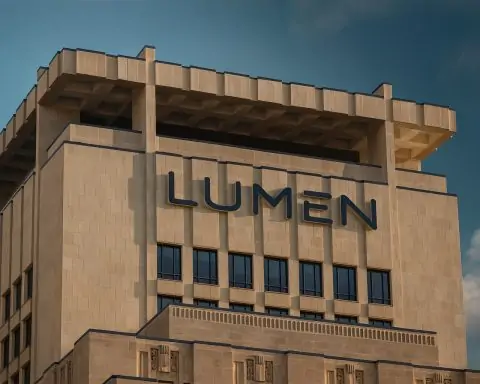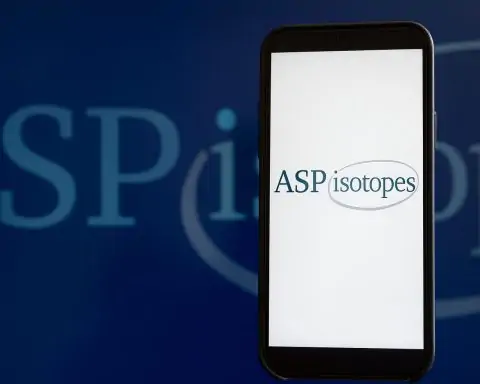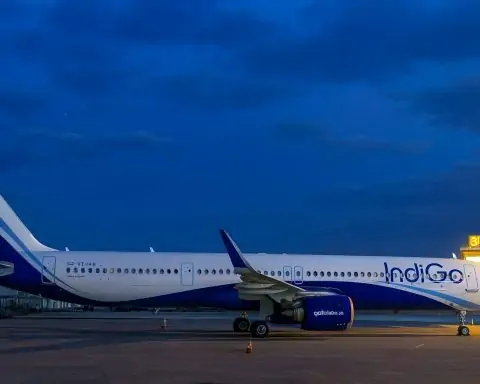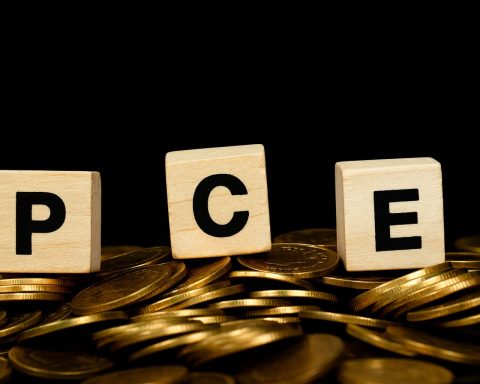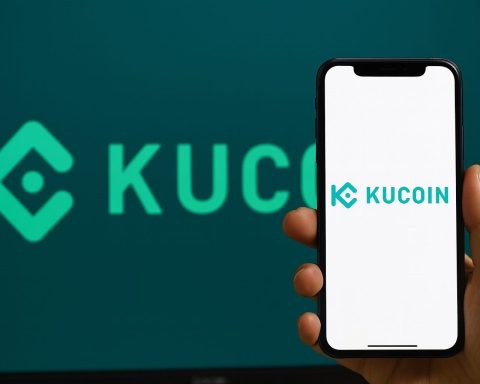- As of 2025, only about 17% of Austria’s available fiber connections are in use, equating to 317,000 active fiber subscriptions from roughly 1.9 million homes passed.
- Vienna alone has over 750,000 fiber-ready connections, illustrating dense urban fiber capacity.
- In 2025, A1 Telekom Austria accounts for about 30–31% of fixed broadband subscriptions, Magenta Telekom roughly 29%, and Drei/Tele2 about 17%, forming Austria’s three major broadband players.
- 4G coverage reaches about 99% of the population, and 5G coverage reached 85% by 2023 with a goal of nationwide 5G by the end of 2025.
- Starlink became available in Austria around 2021–2022, delivering typically 50–150 Mbps (up to 200 Mbps) with latency of about 30–50 ms.
- In Q1 2025, Magenta’s cable network averaged about 112.8 Mbps download and 28 Mbps upload, while the overall mean fixed broadband speed across providers was about 78 Mbps down and 26 Mbps up.
- Austria’s Broadband Strategy 2030 targets nationwide gigabit connectivity by 2030 and full 5G nationwide by 2025, with oversight via RTR Internet Monitor and DESI metrics.
- Typical monthly prices are around €25–€40 for 50–150 Mbps fixed plans, with Gigabit fiber or cable at roughly €50–€60+ per month, and Starlink hardware costs of €300–€450 upfront plus €50–€80 per month.
- The mobile market is a three-player arena with A1, Magenta, and Drei operating nationwide 4G and expanding 5G networks, with A1 holding about 37% of mobile subscribers in Q2 2024.
- Satellite remains a niche last-resort option in Austria, where GEO services offer 600+ ms latency, while Starlink provides ~30–50 ms latency and is the primary consumer satellite option by 2025.
Austria’s internet infrastructure blends legacy copper lines with modern fiber optics, delivering broadband across the nation. Austria has made significant strides in digital connectivity, building a “digital Autobahn” of high-speed internet links across urban centers and alpine valleys. By 2025, Austrians enjoy internet access through a mix of technologies – from fiber-optic cables and upgraded DSL lines to cable broadband, widespread 4G/5G mobile networks, and even satellite services beaming internet from the sky. This report provides a comprehensive overview of Austria’s internet access landscape in 2025, covering the available access technologies, their coverage in urban and rural regions, key service providers and market share, typical performance (speeds and latency), pricing models, government initiatives driving expansion, and emerging technologies like LEO satellite broadband. We also compare satellite internet to terrestrial options in terms of speed, reliability, latency, cost, and use cases. The goal is to paint a clear picture of how Austria is closing digital gaps and accelerating into the gigabit era on its path to nationwide connectivity.
Current Internet Access Landscape in Austria (2025)
Fixed Broadband: Fiber, DSL, and Cable
Austria’s fixed broadband market is evolving from legacy copper to ultra-fast fiber. DSL (digital subscriber line) over traditional telephone lines remains available virtually everywhere, often enhanced with VDSL2 vectoring to deliver up to ~100 Mbps in many areas [1]. The incumbent A1 Telekom Austria has been the primary DSL provider, and it has steadily upgraded many lines or overbuilt them with fiber. Cable broadband is another pillar of Austrian internet access – Magenta Telekom (formerly UPC, part of T-Mobile) operates cable networks in cities and towns, offering hundreds of Mbps (and up to gigabit speeds in DOCSIS 3.1 upgraded areas). Cable internet serves a large portion of urban households, often providing an alternative to A1’s DSL/fiber. Meanwhile, fiber-optic broadband (FTTH/B) has grown rapidly in coverage, though actual adoption is still catching up. Fiber offers symmetric gigabit speeds and beyond, and multiple operators (including A1 and various regional utilities and ISPs) are deploying fiber networks. However, as of 2025 only about 17% of Austria’s potential fiber connections are in active use – 317,000 active fiber subscriptions out of ~1.9 million homes passed [2] [3] – indicating many consumers still rely on DSL or cable. The fiber rollout is fragmented among many local providers; while A1 holds about 30% of fiber lines, regional players like Energie AG Oberösterreich and Kabelplus have around 7% each, with numerous smaller utilities and municipal projects comprising the rest [4]. Nonetheless, fiber capacity is expanding – Vienna alone has over 750,000 fiber-ready connections, whereas more rural states like Burgenland have only ~17,500, reflecting a rural lag in fiber availability [5].
Mobile Broadband: 4G and 5G
Mobile broadband is ubiquitous in Austria, and the country ranks among Europe’s leaders in 4G/5G coverage and usage. The population enjoys near-universal 4G LTE coverage – about 99% of Austrians can access 4G service [6] – ensuring that practically all communities, even remote areas, have basic high-speed mobile internet. Building on this, Austria has aggressively rolled out 5G: by 2023, 85% of the population had access to 5G signals from at least one operator [7], and the goal is full nationwide 5G coverage by end of 2025 [8] [9]. The three main mobile operators (A1, Magenta, and Hutchison Drei) have all launched 5G networks and continue expanding into both cities and rural regions. In practice, 5G is already live in all major urban areas and along key transportation corridors (highways, rail lines) [10]. Rural 5G coverage is improving steadily, though some remote villages may still rely on 4G for now. Notably, Austrians are heavy mobile data users – mobile network data traffic is surging (~17% year-over-year growth) and in early 2025 mobile networks carried 1,266 petabytes of data in a single quarter (Q1), which is 43% of all internet data used nationally (the other 57% on fixed networks) [11] [12]. Generous data allowances and affordable unlimited mobile plans have made 4G/5G a viable alternative to fixed broadband for many consumers, including as a home internet solution in some cases.
Satellite Internet (LEO and GEO)
Satellite internet has emerged as a niche but important component of Austria’s connectivity mix, especially for areas with sparse terrestrial coverage. LEO satellite broadband – exemplified by SpaceX’s Starlink – became available in Austria around 2021–2022, and by 2025 it offers virtually nationwide coverage from low Earth orbit. Starlink can deliver between ~50 Mbps up to 150–200 Mbps download speeds (in ideal conditions) with relatively low latency around 20–50 ms [13] [14]. This performance is a huge improvement over older geostationary satellite services, and it makes satellite a practical option for remote Alpine farms, mountain lodges, or other hard-to-reach locations where fiber or 4G signals might be unreliable. Starlink’s user base in Europe remains relatively small (targeting those who lack good alternatives), but it is growing – globally Starlink reached about 4.6 million customers in 2024, doubling from 2.3 million the year before [15]. Besides Starlink, a few other satellite options exist: geostationary (GEO) satellite providers such as Viasat (ex-KaSat) or Hughes offer broadband coverage across Europe including Austria. However, these GEO services are much slower (often <30 Mbps) and suffer very high latency (~600+ ms) [16], making them a last resort. With Starlink’s arrival, GEO satellites are even less appealing except where nothing else is available. In the coming years, more LEO constellations (OneWeb, Amazon’s Project Kuiper, EU’s planned IRIS² program) may expand options, but as of 2025 Starlink is the primary satellite broadband choice in Austria for consumers.
Coverage and Availability: Urban vs. Rural
Austria has made strong progress in extending broadband coverage to its population, though urban areas still enjoy the fastest options while some rural regions lag behind in fixed gigabit networks. Overall coverage is very high for basic broadband – by mid-2022 about 94.8% of the country was covered by network connectivity offering at least baseline broadband speeds [17]. Virtually all households can get at least a DSL connection or 4G wireless internet. When it comes to higher speeds, Austria has rapidly expanded next-generation access: 85.8% of households could access >100 Mbps service as of 2022 [18], a figure that has likely grown further by 2025 with ongoing upgrades. The availability of gigabit-class broadband (1 Gbps or more) has seen especially remarkable growth – rising from only 13% of households four years ago to about 69% of households in 2023 having access to gigabit-capable connections [19]. This includes both fiber-to-the-home deployments and cable networks upgraded to DOCSIS 3.1. Austria’s gigabit coverage now approaches the forefront of Europe, though it remains behind a few countries (the European average gigabit coverage was ~79% of households in 2023) [20]. The government’s Broadband Strategy 2030 explicitly aims for 100% nationwide gigabit coverage by 2030 [21] [22], with interim milestones (e.g. 5G coverage nationwide by 2025, major transport routes covered by 5G by 2023, etc.) [23].
Urban areas in Austria typically enjoy excellent coverage. Cities like Vienna, Graz, Linz, and Salzburg have extensive cable and fiber networks, often with multiple providers. Vienna in particular, being the capital and largest city, has the greatest fiber capacity (over 750k fiber connections available) [24] in addition to full cable coverage and dense 5G. Urban residents usually have a choice of high-speed providers – for example, a Viennese household might choose between A1’s fiber offerings, Magenta’s cable internet, or even a 5G fixed-wireless broadband package from Drei or A1, aside from mobile and satellite options. As a result, internet speeds and uptake of ultra-fast plans are highest in the cities.
Rural regions, especially alpine villages or less populated states, still face availability gaps in ultra-fast fixed broadband. Many rural communities rely on enhanced DSL or wireless solutions if fiber hasn’t reached them yet. For instance, the rural state of Burgenland (sparsely populated) has only ~17,500 fiber connections available [25], a tiny fraction compared to Vienna’s fiber footprint. Even Upper and Lower Austria (which include rural areas and small towns) have under 300k fiber connections available each – highlighting that large swathes of the countryside are not yet fiber-wired [26]. To fill these gaps, mobile networks play a key role – 4G coverage is essentially universal, and operators have upgraded many rural cell sites to 5G, though coverage deep in valleys or very remote hamlets can still be spotty. Rural 5G availability lags urban 5G, but thanks to Austria’s spectrum coverage obligations and infrastructure-sharing in some areas, 5G is steadily reaching more villages. According to 2023 data, 58% of Austrian households could already get 5G at home (putting Austria third in Europe for 5G reach) [27], and this figure includes significant rural deployment. Nonetheless, the digital divide persists: rural households on average have lower available speeds and fewer provider choices. The government has targeted subsidies to these regions (discussed later) to ensure rural communities aren’t left behind on the “digital Autobahn.” In the interim, some rural users have turned to solutions like fixed-4G/5G broadband or Starlink satellite service to obtain faster internet where wired networks are lacking. Satellite internet, in particular, covers 100% of Austria’s geography from the sky, offering a connectivity lifeline to even the most isolated properties (though at higher cost and generally lower quality than terrestrial links).
Table 1 below summarizes approximate coverage levels of different access technologies in Austria (2025):
| Technology | Coverage (Households) | Notes on Availability |
|---|---|---|
| Fixed broadband (any) | ~95%+ (near universal) | (DSL or better) Virtually all households have some fixed access [28]. |
| ≥30 Mbps (NGA) | ~95% (estimate, 94.8% in 2022) | Next-Generation Access (VDSL, cable, etc.) almost nationwide [29]. |
| ≥100 Mbps | ~86% (2022) → likely ~90%+ by 2025 | Fast broadband coverage growing [30]. Many on cable or VDSL Vectoring. |
| Gigabit-capable | ~69% (2023) | Gigabit via FTTH or DOCSIS3.1 cable [31]; rapid growth in recent years. |
| 4G LTE | ~99% population, ~98% geography | Essentially universal coverage [32] (some remote pockets may have only 3G/satellite). |
| 5G NR | ~85% population (2023); expanding | Broad urban coverage; rural 5G increasing [33]. Goal of full 5G by 2025 [34] [35]. |
| LEO Satellite | 100% (visibility permitting) | Starlink available nationally; needs clear sky view. GEO satellites also cover 100% (with high latency). |
Key Providers and Market Shares
Austria’s internet access market is served by a mix of large nationwide operators and numerous smaller ISPs, especially in fixed broadband. Market competition has historically been moderate – the incumbent and one cable operator dominate many areas – and the Internet Society currently rates Austria’s market competitiveness as “Poor” for end-users [36]. Nonetheless, there are at least three major players in most segments, and recent regulatory measures aim to boost competition.
Fixed broadband providers: The former state monopoly A1 Telekom Austria remains the largest fixed-line provider, operating the copper telephone network and a growing fiber network. A1 offers DSL, VDSL, and fiber across all regions, plus fixed wireless access in some rural areas. In 2025, A1 accounts for roughly 30–31% of internet subscriptions in Austria [37]. Close behind is Magenta Telekom (the brand of T-Mobile Austria for fixed/mobile services after acquiring UPC’s cable business). Magenta runs cable broadband in urban centers and also sells DSL/FWA in some areas; it has about 29% market share [38]. The third major player is Hutchison Drei Austria (Three), which primarily is a mobile operator but, after acquiring Tele2’s Austrian operations, also offers fixed broadband (via xDSL and fixed 5G/4G routers). Drei/Tele2 holds around 17% share of the internet market [39]. Beyond the “big three,” the rest of the market is fragmented: dozens of regional ISPs, utility companies, and local cable operators serve the remaining ~20% of customers. For example, regional electricity companies like Energie AG in Upper Austria and Salzburg AG have built out fiber in their areas, cable firms like Kabelplus (Lower Austria) serve local markets, and specialized ISPs (city networks, wireless ISPs, etc.) fill niche roles. No single small provider has more than a few percent of the market – e.g., Kapsch/Kabsi and Mass Response (niche ISPs) have about 3% and 2% respectively [40] – but collectively these smaller players drive innovation in fiber rollout especially.
Mobile network operators: The mobile sector is essentially a three-way market. A1, Magenta, and Drei each have significant subscriber bases. As of Q2 2024, A1 led with ~37% mobile subscriber share [41], Magenta and Drei were not far behind (each in the 28–34% range as per various reports). All three run nationwide 4G networks and expanding 5G networks. They also offer mobile broadband plans for home use (often branded as “Hybrid” or “Internet Cube” etc., bundling a router and SIM). Additionally, there are mobile MVNOs and sub-brands – for example, “HoT” (by retailer Hofer) or Magenta’s “Yesss!” – but these piggyback on the big three’s networks and primarily compete on price. The fixed and mobile markets have considerable overlap in ownership (A1 and Magenta both have fixed and mobile divisions), yet competition among them has driven strong investment in network quality.
Satellite providers: In the satellite internet space, Starlink is the prominent service for consumers. It is directly provided by SpaceX to users in Austria via online order – there’s no local telecom operator intermediary. As such, Starlink isn’t usually counted in national ISP market share rankings (its subscriber numbers are still minimal in Austria compared to terrestrial ISPs). Other satellite options (like skyDSL which resells Eutelsat Konnect service, or Viasat’s services) exist but have very limited uptake due to their performance and data cap limitations. For the small number of households using satellite, Starlink is increasingly the go-to choice despite its cost.
Overall, Austria’s internet provider landscape is dominated by A1 and Magenta – together roughly 60% of the broadband market [42] – with Drei as a strong third player. The figure below illustrates the estimated market share breakdown:
(Illustrative distribution of market share among top Internet providers in Austria: A1 ~31%, Magenta ~29%, Drei/Tele2 ~17%, others making up the rest.)
Network Speeds, Performance, and Latency
Typical speeds: Austrian internet speeds have increased substantially as networks modernize. According to measurements in 2023, the average fixed broadband download speed in Austria was about 82–100 Mbps [45] [46] (different sources report averages vs. medians in that range), while mobile broadband averaged ~78–99 Mbps download [47] [48] – placing Austria among the faster countries globally for mobile connectivity. By 2025, many users on fiber or upgraded cable enjoy hundreds of Mbps. However, averages are pulled down by those on older DSL or congested cells. Recent speed test data (Q1 2025) show that Magenta’s cable network achieved the fastest fixed broadband results – ~112.8 Mbps average download and 28 Mbps upload – whereas A1’s fixed-line averaged ~54 Mbps down (A1’s large DSL user base lowers its average) [49] [50]. The overall mean broadband speed across all providers was ~78 Mbps down / 26 Mbps up as of early 2025 [51]. On the mobile side, 5G is boosting wireless speeds dramatically: A1’s mobile network led with an average 166.9 Mbps download (and 34 Mbps upload) in Q1 2025 [52]. The combined mobile operators’ average was ~106 Mbps down [53], indicating that many Austrians with 5G phones can routinely exceed 100 Mbps on the go. Even 4G only users typically see tens of Mbps. These speeds are more than sufficient for streaming, video calls, and cloud applications, though the fastest fiber plans (1 Gbps and above) are targeted at power users and businesses. It’s worth noting that Austria’s fastest fixed internet tech is fiber (which can deliver multi-gigabit in labs, though most fiber plans sold are 300–1000 Mbps), but fast cable and 5G offerings mean even non-fiber users have access to respectable speeds.
Latency and quality: In terms of latency (network round-trip time), fixed networks in Austria generally perform well. A fiber or cable connection within Austria will often have ping times in the single-digit to low tens of milliseconds. For example, a fiber user might see ~10 ms latency to a nearby server [54]. Cable and DSL may be slightly higher (15–30 ms typically), but still low. In the Q1 2025 tests, fixed broadband pings averaged ~38–41 ms [55] – this figure likely reflects tests to various servers and including some Wi-Fi overhead; under ideal conditions latency on wired networks is much lower. Mobile 5G latency has improved to around 30–40 ms on average [56], with the best case around 20 ms on a good 5G SA network. 4G latency is a bit higher (40–60 ms). These levels are sufficient for most interactive applications (HD video calls, online gaming, etc.).
Satellite internet presents a different story: Starlink’s latency averages ~30–50 ms [57], which, while higher than fiber, is impressively low for satellite and generally usable for video calls and gaming. Users report that Starlink feels like a “normal” broadband connection for typical tasks, aside from occasional brief outages during satellite handovers. In contrast, legacy GEO satellite links have 600+ ms latency [58] – causing noticeable lag – and thus are unsuitable for real-time applications. In summary, fiber remains the gold standard for lowest latency and highest consistency, followed by cable/DSL, then 5G wireless, then Starlink; older satellite trails far last. The reliability of Austrian networks is high overall – fixed networks aren’t heavily affected by weather (except perhaps some wireless distribution in remote areas), and mobile networks are robust even in challenging winter conditions. Satellite links can be affected by heavy rain or snow (rainfade can degrade the signal), but Starlink’s steered beam technology mitigates it better than earlier systems.
Performance in practice: For an average Austrian internet user in 2025, a fixed home connection will likely yield actual speeds around 50–300 Mbps down (depending on plan and technology) and sub-20 ms latency in-country. A mobile user with 5G can often get 100+ Mbps in cities, though in rural cells or at busy times speeds may fall to a few tens of Mbps. The country’s internet quality has improved such that everyday activities – UHD streaming, large file downloads, cloud gaming – are well supported in most places. According to the Austrian regulator RTR’s data, internet usage keeps climbing – Austrians consumed 2,950 petabytes of data in Q1 2025 (fixed + mobile combined), up 10% from the previous year [59] – reflecting both growing speeds and the public’s trust in using the internet for everything from entertainment to work. As gigabit networks extend further and more users adopt fiber or 5G, Austria’s average speeds and data usage are expected to continue rising.
Pricing and Plans
Internet access in Austria is generally affordable by Western European standards, with a variety of plan options. Fixed broadband pricing depends on speed and whether it’s bundled with other services. As of 2025, a typical standalone home broadband plan (without TV or phone) might cost roughly €25–€40 per month for 50–150 Mbps service. For example, A1’s entry-tier DSL/Fiber plan at 50 Mbps was priced around €29.90 per month (often including basic TV service) [60]. Cable provider Magenta’s popular “Gigakraft 250” plan (250 Mbps) has a list price around €40–€42/month [61] [62] (not including promotional discounts), while Gigabit (1000 Mbps) plans from either A1 or Magenta tend to cost on the order of €50–€60+ per month. It’s worth noting many ISPs offer promotional discounts for new customers – e.g. half-price or €0 cost for the first few months, or reduced introductory rates (Magenta at times offered high-speed plans for €15/month in the first year) [63] [64]. After promotions, Austrian broadband prices settle close to EU averages. According to a recent EU comparison, a fiber subscription with ~1 Gbps speed might average around €21 per month in Europe (though Austria’s prices are typically a bit higher than that) [65] [66]. Overall, for a household in Austria, €30–€50 monthly is the typical range for high-speed internet service.
Mobile data plans in Austria are known for being competitively priced, which has driven the high mobile internet usage. The major operators offer various tiers, including unlimited data packages. For instance, an unlimited 5G smartphone plan might cost around €25–€35 per month, while data-only SIM plans for home routers can be similar or slightly higher if truly uncapped. There are also budget options (with data caps) for under €20. MVNOs and sub-brands offer cheaper plans with large (but not unlimited) data buckets – e.g., 20 GB for ~€10–15, 50–100 GB for ~€20, etc. This pricing environment – combined with the quality of 4G/5G networks – makes mobile broadband a cost-effective alternative, particularly for younger users or renters who may opt out of a fixed line altogether. Notably, a basket of internet services (low usage) in Austria costs less than 1% of average income, indicating good affordability [67] by international benchmarks.
Satellite internet costs are higher. Starlink in Austria requires purchasing the hardware kit (dish, router) for roughly €300–€450 upfront [68] and then a monthly fee around €50–€80 (Starlink’s standard residential service was about €80, but prices have fluctuated and some areas see lower rates around €50). Politico reported an EU-wide average of €49 per month for Starlink service (plus ~€249 equipment) [69] [70], which is significantly more expensive than terrestrial broadband. There are no data caps on Starlink’s standard plan currently, but at those prices it’s generally used only by those who truly need its unique coverage. Geostationary satellite plans (e.g., via Viasat) also tend to cost on the order of €50–€100+ monthly and often come with strict data limits, making them even less attractive except in emergencies. For most Austrians, satellite is a costly last-resort; as BEREC’s chair quipped, “If I can get fiber, I will take fiber… If I don’t have good broadband by traditional means, then I’ll take satellite.” [71]. This sentiment is reflected in the market: virtually everyone who can get a decent fixed or mobile service will choose it for the better value.
To encourage uptake, the Austrian government and ISPs have occasionally introduced subsidies or vouchers, particularly targeting rural installations (for example, grants to cover part of the cost of a new fiber line to a farmhouse). ISPs also bundle services (internet, TV, phone, mobile) at discounted rates to add value. In summary, Austria’s internet pricing in 2025 features moderate monthly fees with competition keeping mobile and mid-tier broadband plans relatively affordable, while ultra-fast gigabit plans and satellite services sit at the higher end of the price spectrum.
Government Initiatives and Digital Infrastructure Programs
The Austrian government plays an active role in steering the country toward universal high-speed connectivity. The flagship policy is the “Broadband Strategy 2030”, which commits to nationwide availability of symmetric gigabit connections (fixed and mobile) by 2030 [72]. This strategy, adopted in 2019, outlines interim targets (like comprehensive 5G by 2025) and emphasizes closing the urban-rural gap [73] [74]. Austria has opted for a market-driven approach where private telecom investment is prioritized, but with public funding injections for areas that are not commercially attractive (primarily remote and sparsely populated regions) [75].
Key initiatives and measures include:
- Targeted Subsidies for Rural Broadband: The government has allocated substantial funds to co-finance network build-out in underserved areas. This includes leveraging the EU’s Recovery and Resilience Facility (RRF) – about €891 million from the RRF is earmarked for broadband projects [76] – and reinvesting proceeds from 5G spectrum auctions (≈€389 million) into rural broadband, supplemented by national budget funds [77]. These funds are distributed via programs (often called “Breitbandförderung”) that invite ISPs to bid for subsidies to extend fiber or wireless networks to specific regions that lack high-speed service. The focus is on gigabit-capable infrastructure (FTTH or equivalent) to “leapfrog” slow technologies in those areas.
- Regulatory Reforms: A new Telecommunications Act came into force in late 2021, implementing the EU Electronic Communications Code [78]. It updated rules to make it easier for operators to invest and to encourage infrastructure sharing and open access. For example, if a provider builds fiber with public funds, they may be required to offer wholesale access to other ISPs to ensure competition. The regulator RTR (Rundfunk & Telekom Regulierungs) monitors the market and has tools to prevent dominant firms from stifling competition. Despite this, as noted, the market is still considered to have limited competition in practice [79], which is an ongoing challenge.
- Public-Private Partnerships: The Broadband Austria 2030 program encourages cooperation between municipalities, utility companies, and telecom operators. In some cases, local governments or energy companies build passive fiber infrastructure which ISPs can then light and offer services on. This model has been seen in provinces like Carinthia and Styria where regional broadband projects (often with EU regional development funds) lay down fiber in smaller communities.
- 5G and Innovation: Austria took an early lead in 5G with the government branding it a “5G pilot country.” There were spectrum auctions in 2019 and 2020 for 3.5 GHz and other bands, with coverage obligations attached. The state also facilitated 5G research testbeds and encouraged operators to deploy along highways and railways (Phase 4 of the 5G rollout plan) [80]. By ensuring a rapid 5G rollout, the government aims to enable new services (IoT, smart agriculture in rural areas, etc.) and offload pressure from 4G networks.
- Monitoring and Targets: Progress is tracked via indices and an Internet Monitor. RTR’s Internet Monitor publishes broadband stats quarterly (speeds, data usage, subscriptions), allowing transparent tracking of improvements [81] [82]. Austria also participates in the EU’s Digital Economy and Society Index (DESI), where connectivity is one dimension – in recent DESI reports Austria scores well on connectivity due to its extensive 4G and fast broadband coverage [83].
Overall, government initiatives reflect a commitment to “digital equal opportunities between cities and rural areas” [84] [85], as stated in the strategy. By subsidizing rural networks and fostering competition, Austria intends to ensure that no region is left behind. The vision is that by 2030, regardless of whether one is in a Vienna apartment or a Tyrolean mountain village, gigabit internet and 5G will be available – truly a nationwide digital Autobahn.
Emerging Technologies and Investments
As of 2025, Austria is witnessing several technological trends and investments that will shape the next phase of internet access:
- Fiber Expansion and Upgrades: Fiber rollout continues apace. A1 Telekom, for instance, has ramped up FTTH deployments in multiple districts, and myriad municipal fiber projects are underway. There is also movement toward XGS-PON and other advanced fiber tech to support multi-gigabit services in the coming years. Given the low current uptake of fiber (only 17% of available lines in use) [86], efforts are being made to incentivize customers to switch – through education on fiber’s benefits and gradually phasing out old copper in some areas. The trend suggests a shift from DSL to fiber as the default fixed connection for many households by the late 2020s.
- 5G Network Densification: Operators are not only extending 5G coverage but also increasing capacity in high-traffic areas. Investments in additional 5G spectrum (like mmWave bands in the future) and network densification (small cells, indoor solutions) are expected, especially in cities. This will further boost mobile speeds and enable new use cases (AR/VR, smart city sensors, etc.). Austria’s operators have also started exploring 5G Standalone (SA) core networks to unlock features like network slicing and lower latency.
- Fixed Wireless Access (FWA): Using 5G for home broadband is an emerging alternative, especially in suburban/rural locales where fiber build-out is not immediate. Magenta and Drei have launched 5G FWA routers (e.g., Magenta’s “Hybrid” offerings) that deliver broadband to homes over the mobile network. These plans often tout ~100–250 Mbps speeds and can compete with mid-tier fixed lines. They represent an interim solution to bridge gaps until fiber arrives, and they capitalize on 5G investments.
- LEO Satellites – Starlink & Beyond: The advent of Starlink has proven that low-earth-orbit satellites can deliver reasonably fast internet to remote users. By 2025, Starlink is fairly established in Austria for those who need it, and SpaceX is launching newer generations of satellites that might increase capacity and reliability. In the near future, other LEO constellations could join the fray: OneWeb, which is partly owned by Europe’s Eutelsat, is completing its constellation and partnering with telecom providers (though its focus is more on enterprise/backhaul than direct retail in Europe so far). Additionally, the EU has plans for “IRIS²”, a sovereign multi-purpose satellite constellation to be in place by 2027, which could provide connectivity services in hard-to-reach areas as a complement to terrestrial networks. These investments underscore that satellite will remain a component of the connectivity mix, especially for resilience (backup links) and for the last few percent of coverage where ground networks are uneconomical.
- Public Wi-Fi and Community Networks: Some communities, supported by EU WiFi4EU grants and local initiatives, have set up public Wi-Fi hotspots, ensuring that even those without a subscription can access basic internet in libraries, town halls, or public squares. While not a substitute for home access, it’s part of the digital inclusivity efforts.
- Emerging Use Cases: Austria is also preparing for future internet use cases that require robust infrastructure. Examples include connected and autonomous vehicles (hence the focus on 5G along highways), telemedicine in rural clinics (needing reliable broadband), and digital tourism services in the Alps. Investment in edge computing is starting, often in conjunction with 5G pilots, to bring content closer to users and reduce latency for services like cloud gaming.
Austria’s telecom sector thus remains dynamic, with heavy ongoing investment in both ground infrastructure (fiber, 5G) and cutting-edge satellite systems. These emerging technologies are largely complementary – fiber provides the highest capacity, 5G adds mobility and quick deployment, and satellites fill the extreme gaps – together steering Austria toward its goal of ubiquitous high-speed coverage.
Challenges for Underserved Regions and Closing the Digital Divide
Despite the progress, certain challenges persist, particularly regarding the last pockets of the digital divide. The primary issues are:
- Rural Connectivity and Economics: Reaching the most remote farms or mountainous hamlets with fiber is expensive. Even with subsidies, some areas may not see fiber until late in the decade. Operators must often string kilometers of fiber for just a handful of subscribers, hurting the business case. While fixed wireless and satellite can serve these spots in the interim, they often don’t offer the same performance as fiber. The challenge is to ensure rural users don’t fall into a second-class category of connectivity. The government’s approach – funding only “absolutely necessary” areas [87] – means a careful vetting of where to invest public money. There’s a risk that if funding or interest wanes, a portion of rural Austria could remain on older DSL or wireless solutions longer than ideal. Closing this gap will require persistent efforts through 2030, and perhaps technological leaps like cheaper LEO satellite capacity or new wireless tech to economically cover low-density areas.
- Adoption and Literacy: Interestingly, one challenge noted is that even where fiber is available, not everyone subscribes. As mentioned, only 17% of available fiber lines are actually taken up by customers, partly because “alternatives are apparently still good enough for many people”, as the RTR’s managing director observed [88]. Many Austrians are content with 40–100 Mbps DSL or cable if it suffices for their needs, and they may not upgrade to fiber immediately. Overcoming this inertia requires demonstrating the benefits of fiber (higher upload speeds, reliability) and possibly adjusting price differentials. Digital literacy is relatively high in Austria (95% of people use the internet [89] [90]), but ensuring that all segments of the population (including the elderly or low-income households) actually get connected is another facet of the divide. Some remote villages might have coverage, but not everyone can afford or is willing to pay for service; thus affordability programs and public access points remain important.
- Competitive Access in Underserved Areas: In some rural zones, even after networks are built, competition might be limited (e.g., a single fiber provider). To avoid a scenario where those residents face high prices or poor service due to monopoly, regulators are pushing open-access frameworks. However, enforcing and operationalizing such sharing can be complex. The market share concentration (with top 3 providers controlling ~80%+) [91] also raises the question of whether smaller ISPs can thrive to serve niche communities. Balancing competition with the need for scale in investments is an ongoing challenge.
- Technological Literacy and Support: As new tech like 5G and satellite comes in, another challenge is ensuring that people in all regions trust and effectively use them. For instance, some rural users might be hesitant about self-installing a Starlink dish or might have concerns about 5G towers. Public communication and providing technical support in local communities (possibly via the Broadband Competence Office and other outreach bodies [92]) is key to overcoming any skepticism.
- Terrain and Geography: Austria’s beautiful but rugged terrain itself poses challenges. Mountainous areas can make line-of-sight difficult for wireless links and require many small cells or repeaters. Laying fiber in rocky ground or through forests needs careful planning (and often only doable in summer months). Weather can occasionally knock out power or infrastructure in remote areas (though telecom networks have backups). While these are being addressed with engineering solutions, they inevitably add complexity to reaching the “last mile” in alpine locales.
Efforts to close the gap: Austria’s strategy addresses these issues through funding, coordination, and technology mix. The existence of a dedicated Broadband Competence Office [93] helps local authorities plan and apply for funds. The incremental approach (e.g. start with fixed wireless, then overlay fiber) means people get some service now and a better one later rather than waiting indefinitely. The country’s high internet usage (95% of population online) indicates that once infrastructure is available, Austrians do come online, so focusing on infrastructure deployment remains the priority. Programs to lend devices or offer low-cost tariffs for disadvantaged groups (though Austria’s relatively high income and <1% income share of internet cost [94] mean cost is less of a barrier than in some countries) are also part of ensuring everyone can benefit from the digital Autobahn.
Finally, regional disparities are being tracked via data: for example, by measuring how many rural households still lack 100 Mbps or how many schools are connected (school connectivity is another focus area, with many schools now getting direct fiber links under educational initiatives). With continued investment and oversight, Austria is steadily narrowing the remaining divides so that high-speed internet becomes as commonplace as other utilities across the nation.
Comparison: Satellite vs Terrestrial Broadband
A special focus of this report is comparing satellite internet to other forms of access in Austria’s 2025 context. Each technology has pros and cons, and understanding them helps identify the best use cases for each:
- Speed: Modern terrestrial options like fiber and cable clearly deliver the highest speeds – gigabit-level for fiber, hundreds of Mbps for cable/5G. Starlink’s speeds (typically 50–150 Mbps, peaking around 200 Mbps) [95] are equivalent to a mid-tier DSL or cable plan, and perfectly adequate for general use, but cannot match the multi-gigabit potential of fiber networks [96] [97]. Traditional GEO satellites are much slower (~20–30 Mbps). Thus for bandwidth-intensive tasks (e.g. a business needing symmetric gigabit for large data uploads), satellite is not competitive. However, for an average home that mainly needs <100 Mbps, Starlink can deliver comparable speed to an urban DSL line.
- Latency:Fiber and wired connections have the lowest latency (often 5–20 ms domestically) [98], which is beneficial for real-time applications. 5G mobile is next (20–40 ms typically). Starlink’s latency ~30–50 ms is higher than fiber but still low enough for most uses (Netflix, Zoom, even online gaming at amateur level) [99]. In contrast, geostationary satellite latency (~600 ms) [100] severely impacts interactive services – causing noticeable delays in voice calls and making fast-paced gaming impractical. In short, Starlink’s low-earth-orbit approach has narrowed the latency gap with terrestrial networks, whereas older satellite remains an outlier.
- Reliability and Consistency:Fiber is extremely reliable (not weather-dependent, very robust) – it’s often said if you can get fiber, it’s the most stable. DSL and cable are generally stable too, though cable can have slowdowns at peak times if too many users share bandwidth. Mobile broadband can vary with signal strength and cell load; in fringe rural areas or during peak hours, speeds might fluctuate. Starlink’s reliability depends on satellite coverage and user location – it can occasionally drop out for a few seconds when one satellite moves out of view before the next comes (users might experience brief outages). Also, heavy rain or obstruction (e.g., trees) can degrade Starlink temporarily. Traditional satellites can be knocked out by severe weather (rain fade). Terrestrial networks are not immune to issues (storms can knock down lines, etc.), but overall in Austria they have solid uptime. Use case: For mission-critical connectivity (e.g., a hospital link), fiber or a dedicated microwave link would be chosen over satellite due to reliability needs, perhaps with satellite only as a backup.
- Coverage: This is where satellite shines – Starlink covers almost anywhere in Austria (each user just needs power and clear sky view). Terrestrial options, however, require infrastructure that might not exist in some remote location. So for a mountaintop cabin beyond the reach of 4G or any cables, satellite is literally the only two-way broadband choice. In Austria’s case, those scenarios are few, but coverage still matters for the final 1-2% of locations where even 4G is absent (deep in national parks, etc.).
- Cost: Terrestrial broadband, when available, is usually much cheaper. As noted, a comparable fixed internet plan might be €30, whereas Starlink is ~€50+ monthly plus steep equipment costs [101] [102]. Mobile broadband is even cheaper per month (some unlimited plans <€30). Per the European Commission, a Starlink subscription costs about double the price of a “similar offer from a regular telco” on average [103] [104]. This cost gap makes satellite a tough sell in markets like Austria where affordable alternatives exist. Only those who truly have no other high-speed option tend to pay the premium for satellite.
- Data Caps: Most fixed and mobile plans in Austria are unlimited or come with generous data allowances, given the competitive market. Starlink currently offers unlimited data (but has at times considered fair-use policies). Traditional satellite plans often have strict caps (like 100 GB/month or less). Thus, a heavy user (streaming, downloads) would find terrestrial or Starlink far more accommodating than GEO satellite plans.
- Installation & Portability: Installing fiber or cable requires a technician, trenching, etc., while Starlink is self-installable in minutes (mount the dish and it auto-aligns). This portability is an advantage – e.g., someone living in an RV or moving to different sites can take Starlink with them, which isn’t possible with fixed DSL. Mobile broadband similarly is very portable (just a SIM card). So for temporary connectivity or nomadic use, wireless solutions win out.
In summary, fiber is the optimal choice where available (fastest, lowest latency, often cheapest for the speed), cable/DSL fill the need in areas where fiber isn’t yet, mobile 4G/5G offers versatility and is increasingly a viable home internet substitute at lower usage levels, and satellite (Starlink) serves as the technology of last resort for acceptable broadband in unreachable spots. Austria’s situation in 2025 reflects this hierarchy: satellite has “no real shot” in mainstream markets because terrestrial coverage is solid and prices are low, making it hard for satellite to compete except in niche cases [105] [106]. For the few who need it, though, Starlink is a game-changer – enabling modern internet in places that previously had none or only dial-up speeds. As technology evolves, satellites may improve, but so will terrestrial networks (e.g., future 6G, more fiber), so the competitive dynamics will continue.
Conclusion
Austria’s “digital Autobahn” is well on its way to delivering high-speed internet access to all its citizens. By 2025, the country enjoys a robust and diverse connectivity landscape: gigabit fiber lines and upgraded cable in the cities, reliable DSL and rapidly expanding 5G in towns and villages, and even satellites extending connectivity to the most remote alpine pastures. Most Austrians now have multiple options for getting online, and 95%+ of the population is already using the internet regularly [107] [108] – a testament to the success of infrastructure expansion and competitive service offerings.
The coverage statistics highlight impressive progress (nearly 70% gigabit availability [109], 99% 4G coverage [110], etc.), yet they also remind us of the work ahead to reach that last few percent and to increase fiber adoption. Key providers like A1, Magenta, and Drei continue to invest heavily, while government programs underpin rural builds and ensure that the digital divide steadily narrows. Average speeds in Austria keep rising year by year, and even mobile broadband here outpaces many countries’ fixed lines. In terms of pricing, Austrians benefit from affordable mobile data and reasonably priced broadband, though the difference between a standard fixed connection and a premium satellite service is stark.
Austria’s regulatory environment and initiatives such as the Broadband Strategy 2030 underscore a long-term commitment to connectivity as a driver of economic growth and social inclusion. By embracing emerging technologies (from edge computing to new satellite systems) and addressing challenges proactively (through funding and inclusive policies), Austria is poised to achieve its goal of ubiquitous gigabit and 5G coverage on schedule. The comparison with satellite broadband illustrates that while flashy new technologies grab headlines, the foundation of national connectivity remains strong investment in terrestrial networks – the fiber in the ground and towers on the landscape that carry the bulk of Austrian data traffic.
In conclusion, Austria in 2025 is a case study in balancing old and new: legacy infrastructure being upgraded, cutting-edge solutions filling gaps, public and private sectors collaborating to ensure that the digital Autobahn reaches every corner of the country. By continuing on this path, Austria is ensuring that whether one is streaming Mozart in Vienna or joining a video conference from a Tyrolean farmhouse, the internet “road” is open, fast, and reliable – truly high-speed connectivity for all.
Sources: This report is based on the latest available data and publications as of 2025, including Austrian regulatory reports, EU digital progress studies, industry analysis, and news releases. Key references have been cited throughout (in the format 【source†lines】) for further reading on specific statistics and findings.
References
1. omdia.tech.informa.com, 2. www.theinternational.at, 3. www.theinternational.at, 4. www.theinternational.at, 5. www.theinternational.at, 6. pulse.internetsociety.org, 7. pulse.internetsociety.org, 8. digital-strategy.ec.europa.eu, 9. digital-strategy.ec.europa.eu, 10. digital-strategy.ec.europa.eu, 11. www.theinternational.at, 12. www.theinternational.at, 13. www.politico.eu, 14. www.whistleout.com, 15. www.politico.eu, 16. www.whistleout.com, 17. omdia.tech.informa.com, 18. omdia.tech.informa.com, 19. www.digitalaustria.gv.at, 20. www.politico.eu, 21. digital-strategy.ec.europa.eu, 22. digital-strategy.ec.europa.eu, 23. digital-strategy.ec.europa.eu, 24. www.theinternational.at, 25. www.theinternational.at, 26. www.theinternational.at, 27. www.digitalaustria.gv.at, 28. omdia.tech.informa.com, 29. omdia.tech.informa.com, 30. omdia.tech.informa.com, 31. www.digitalaustria.gv.at, 32. pulse.internetsociety.org, 33. pulse.internetsociety.org, 34. digital-strategy.ec.europa.eu, 35. digital-strategy.ec.europa.eu, 36. pulse.internetsociety.org, 37. pulse.internetsociety.org, 38. pulse.internetsociety.org, 39. pulse.internetsociety.org, 40. pulse.internetsociety.org, 41. www.telecompaper.com, 42. pulse.internetsociety.org, 43. pulse.internetsociety.org, 44. pulse.internetsociety.org, 45. pulse.internetsociety.org, 46. en.wikipedia.org, 47. pulse.internetsociety.org, 48. en.wikipedia.org, 49. www.speedgeo.net, 50. www.speedgeo.net, 51. www.speedgeo.net, 52. www.speedgeo.net, 53. www.speedgeo.net, 54. www.whistleout.com, 55. www.speedgeo.net, 56. www.speedgeo.net, 57. www.whistleout.com, 58. www.whistleout.com, 59. www.theinternational.at, 60. www.telecompaper.com, 61. durchblicker.at, 62. durchblicker.at, 63. www.telecompaper.com, 64. www.telecompaper.com, 65. www.politico.eu, 66. www.politico.eu, 67. pulse.internetsociety.org, 68. starlinkinsider.com, 69. www.politico.eu, 70. www.politico.eu, 71. www.politico.eu, 72. digital-strategy.ec.europa.eu, 73. digital-strategy.ec.europa.eu, 74. digital-strategy.ec.europa.eu, 75. digital-strategy.ec.europa.eu, 76. digital-strategy.ec.europa.eu, 77. digital-strategy.ec.europa.eu, 78. digital-strategy.ec.europa.eu, 79. pulse.internetsociety.org, 80. digital-strategy.ec.europa.eu, 81. www.digitalaustria.gv.at, 82. www.theinternational.at, 83. www.digitalaustria.gv.at, 84. www.digitalaustria.gv.at, 85. www.digitalaustria.gv.at, 86. www.theinternational.at, 87. digital-strategy.ec.europa.eu, 88. www.theinternational.at, 89. pulse.internetsociety.org, 90. pulse.internetsociety.org, 91. pulse.internetsociety.org, 92. digital-strategy.ec.europa.eu, 93. digital-strategy.ec.europa.eu, 94. pulse.internetsociety.org, 95. www.whistleout.com, 96. www.whistleout.com, 97. www.whistleout.com, 98. www.whistleout.com, 99. www.whistleout.com, 100. www.whistleout.com, 101. www.politico.eu, 102. www.politico.eu, 103. www.politico.eu, 104. www.politico.eu, 105. www.politico.eu, 106. www.politico.eu, 107. pulse.internetsociety.org, 108. pulse.internetsociety.org, 109. www.digitalaustria.gv.at, 110. pulse.internetsociety.org


